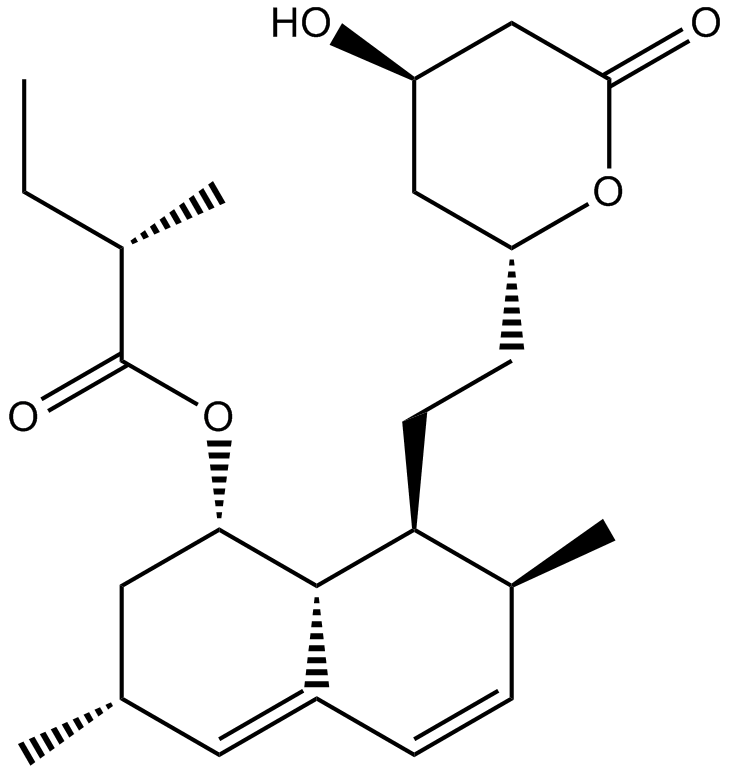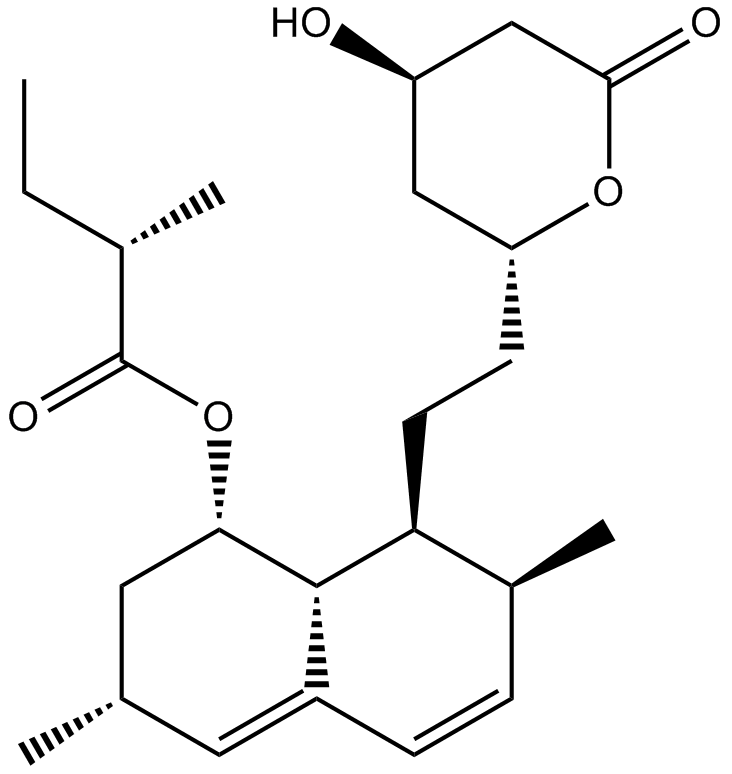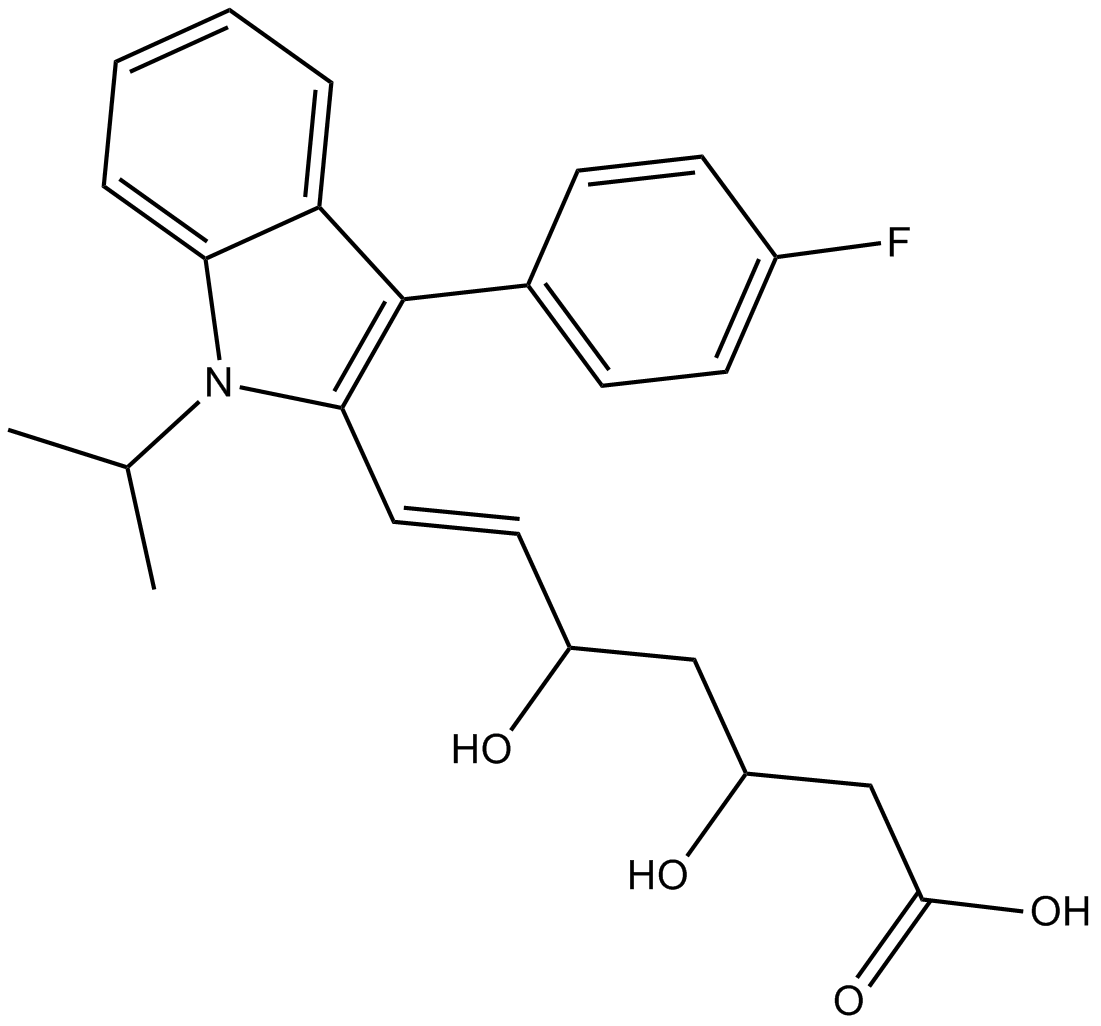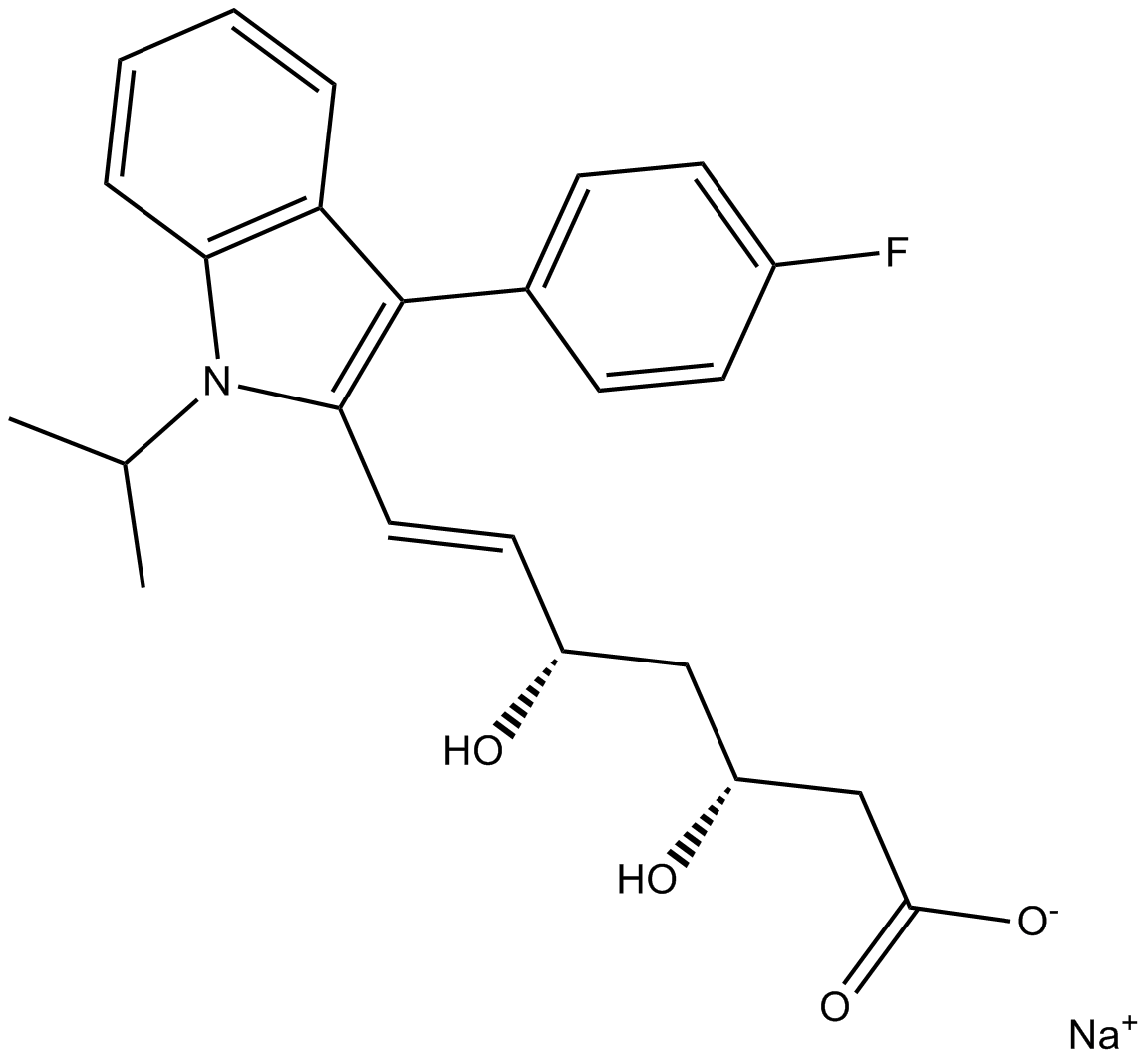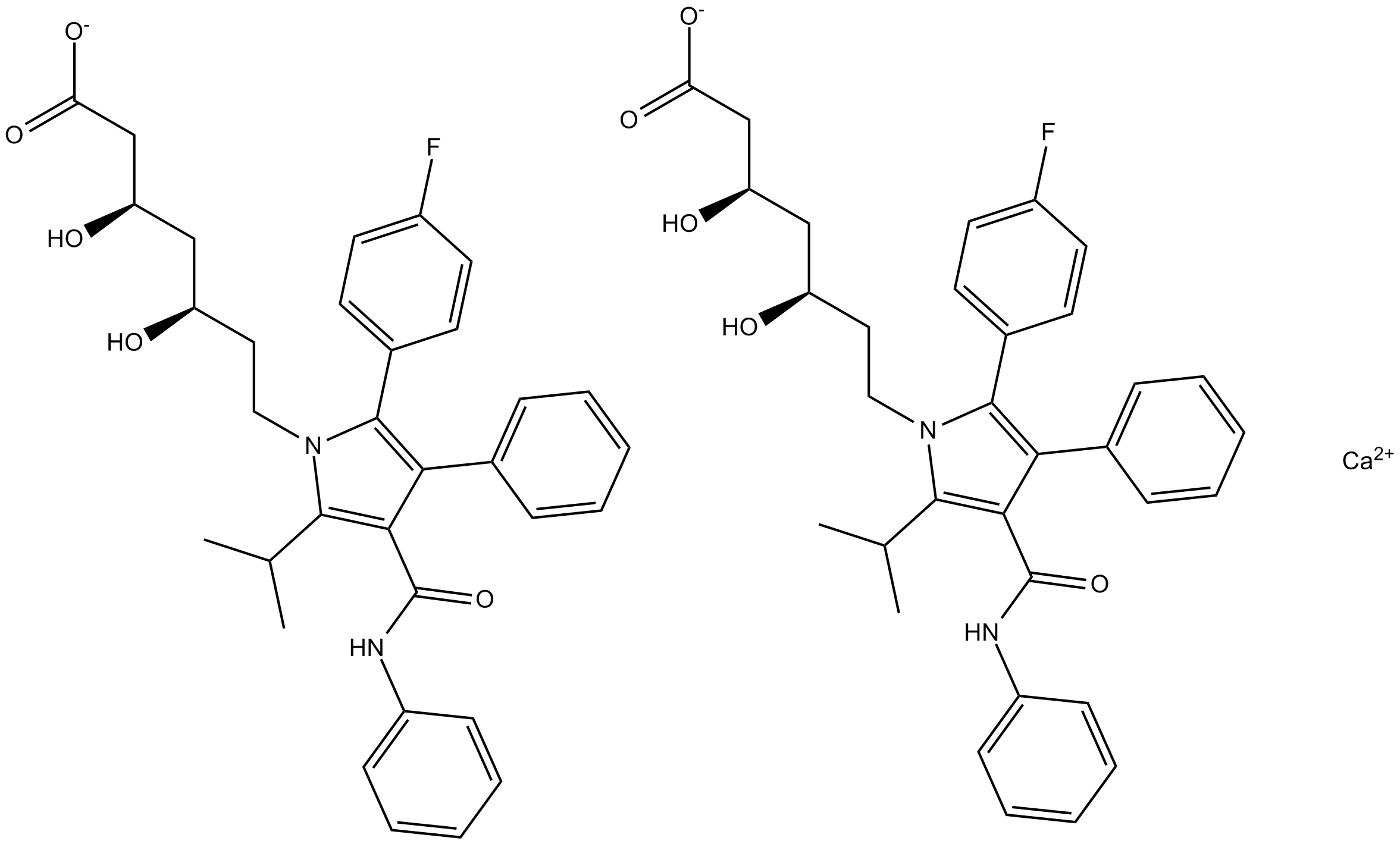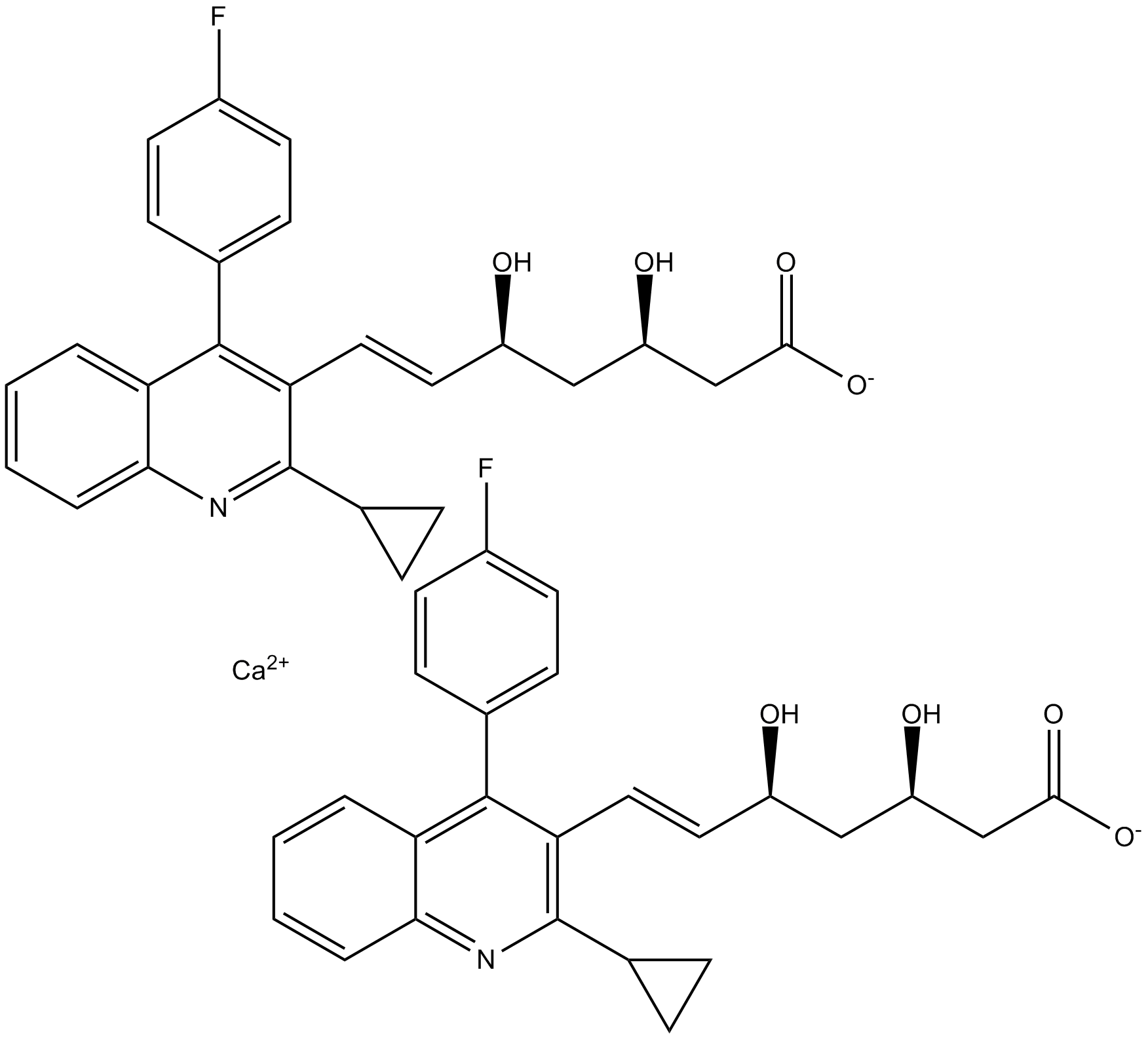Lovastatin
Lovastatin is an inhibitor of 3-hydroxy-3-methyl-glutaryl-CoA (HMG-CoA) reductase with IC50 values of 2.3 nmol/L in rat liver cells and 5 nmol/L in the human liver hepatocellular carcinoma cell line, HepG2 [1].
HMG-CoA reductase is responsible for the catalysis of the rate-limiting step in the biosynthesis of cholesterol. It catalyzes the conversion of HMG-CoA to mevalonate, the second step in the production of cholesterol in cells [2].
Lovastatin prevented the proliferation of several cell types by inhibiting the production of mevalonate and its metabolites. Inhibition of mevalonate formation also prevented the production of isoprenoids which are necessary for cell proliferation and other important cell functions. This reduction in isoprenoids caused beneficial pleiotropic effects. Lovastatin caused reduction in DNA synthesis at concentrations of 1 to 20 µM. At 1 µM, it inhibited the increase of mesangial cells in culture. Lovastatin (5 μM) also increased efferocytosis (phagocytosis of apoptotic cells) after 6 hours. However, after 24 hours, its effect was dose-dependent, with a maximum at 10 µM [3, 4, 5].
Mice treated with lovastatin (10 mg/kg) three times over 30 hours showed increased efferocytosis by alveolar macrophages. In a guinea pig wound chamber model, lovastatin (5 µM, 8 days) decreased granulation tissue formation by 64.7% [5, 6].
References:
[1]. Amin D, Gustafson SK, Weinacht JM, et al. RG 12561 (Dalvastatin): A novel synthetic inhibitor of HMG-CoA reductase and cholesterol-lowering agent. Pharmacology, 1993, 46(1): 13-22.
[2]. Tobert JA. Lovastatin and beyond: the history of the HMG-CoA reductase inhibitors. Nature Reviews Drug Discovery, 2003, 2(7): 517-526.
[3]. Massy ZA, Keane WF, Kasiske BL. Inhibition of the mevalonate pathway: benefits beyond cholesterol reduction. The Lancet, 1996, 347(8994): 102-103.
[4]. O'Donnell MP, Kasiske BL, Kim Y, et al. Lovastatin inhibits proliferation of rat mesangial cells. Journal of Clinical Investigation, 1993, 91(1): 83.
[5]. Morimoto K, Janssen WJ, Fessler MB, et al. Lovastatin enhances clearance of apoptotic cells (efferocytosis) with implications for chronic obstructive pulmonary disease. The Journal of Immunology, 2006, 176(12): 7657-7665.
[6]. Tan A, Levrey H, Dahm C, et al. Lovastatin induces fibroblast apoptosis in vitro and in vivo: a possible therapy for fibroproliferative disorders. American journal of respiratory and critical care medicine, 1999, 159(1): 220-227.
| Storage | Store at -20°C |
| M.Wt | 404.54 |
| Cas No. | 75330-75-5 |
| Formula | C24H36O5 |
| Solubility | insoluble in H2O; ≥18.6 mg/mL in EtOH with ultrasonic; ≥20.2 mg/mL in DMSO |
| Chemical Name | [(1S,3R,7S,8S,8aR)-8-[2-[(2R,4R)-4-hydroxy-6-oxooxan-2-yl]ethyl]-3,7-dimethyl-1,2,3,7,8,8a-hexahydronaphthalen-1-yl] (2S)-2-methylbutanoate |
| SDF | Download SDF |
| Canonical SMILES | CC[C@H](C)C(O[C@@H]1[C@H]([C@@H](CC[C@H](C[C@H](C2)O)OC2=O)[C@@H](C)C=C2)C2=C[C@H](C)C1)=O |
| Shipping Condition | Small Molecules with Blue Ice, Modified Nucleotides with Dry Ice. |
| General tips | We do not recommend long-term storage for the solution, please use it up soon. |
| Cell experiment [1]: | |
|
Cell lines |
HeLa, MCF-7 and HepG2 cell lines |
|
Preparation method |
The solubility of this compound in DMSO is >20.2 mg/ml. General tips for obtaining a higher concentration: Please warm the tube at 37℃ for 10 minutes and/or shake it in the ultrasonic bath for a while. Stock solution can be stored below -20℃ for several months. |
|
Reacting condition |
5-1600 μg/ml |
|
Applications |
Lovastatin, other than its anticholesterol property, has diverse applications in the field of osteoporosis, neuro-degeneration, rheumatoid arthritis, antifungals and also is reported to reduce proliferation of lung cancer cells, breast cancer (MCF-7), liver cancer (HepG2). Lovastatin treatments show significant dose dependent cytotoxic effect on HeLa cells with IC50 value of 160 μg/mL. |
| Animal experiment [2]: | |
|
Animal models |
guinea pig wound chamber model |
|
Dosage form |
5 microM for 8 d |
|
Application |
The ability of lovastatin to induce fibroblast apoptosis in vivo was examined using a guinea pig wound chamber model. Lovastatin (5 microM, 8 d) reduced granulation tissue formation in the wound chambers by 64.7%, with associated ultrastructural evidence of fibroblast apoptosis. |
|
Other notes |
Please test the solubility of all compounds indoor, and the actual solubility may slightly differ with the theoretical value. This is caused by an experimental system error and it is normal. |
|
References: [1] Bhargavi S, et al. Purification of Lovastatin from Aspergillus terreus (KM017963) and Evaluation of its Anticancer and Antioxidant Properties. Asian Pac J Cancer Prev. 2016;17(8):3797-803. [2] Tobert JA, et al. Lovastatin and beyond: the history of the HMG-CoA reductase inhibitors. Nat Rev Drug Discov. 2003 Jul;2(7):517-26. |
|
Quality Control & MSDS
- View current batch:
Chemical structure
